SMC Networks LOOPANTNVIS3 User manual
Other SMC Networks Antenna manuals
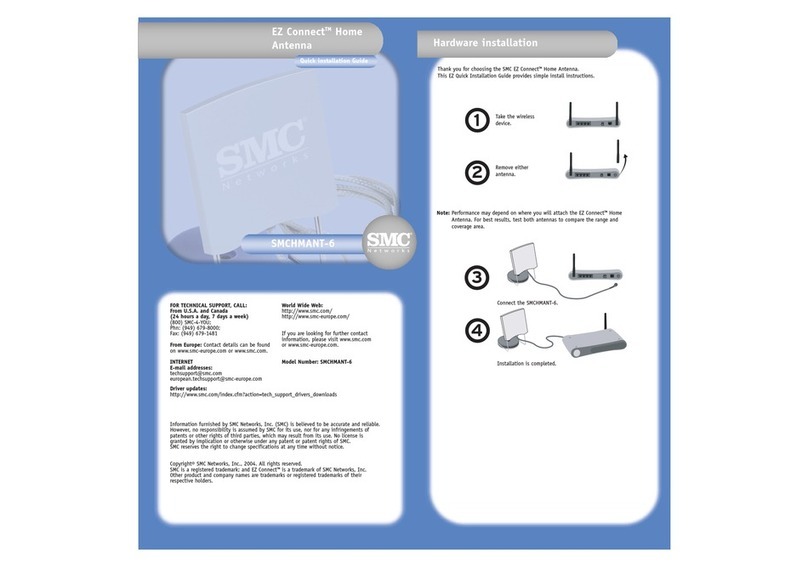
SMC Networks
SMC Networks HMANT-6 User manual
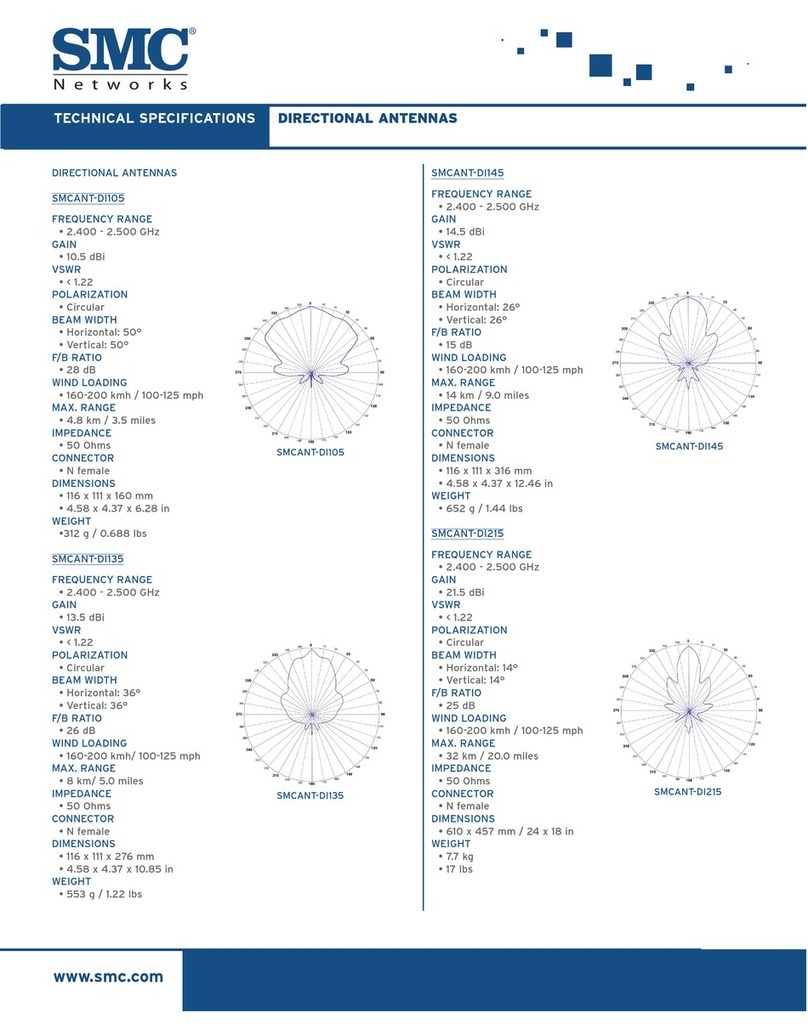
SMC Networks
SMC Networks SMCANT-OOM5P User manual
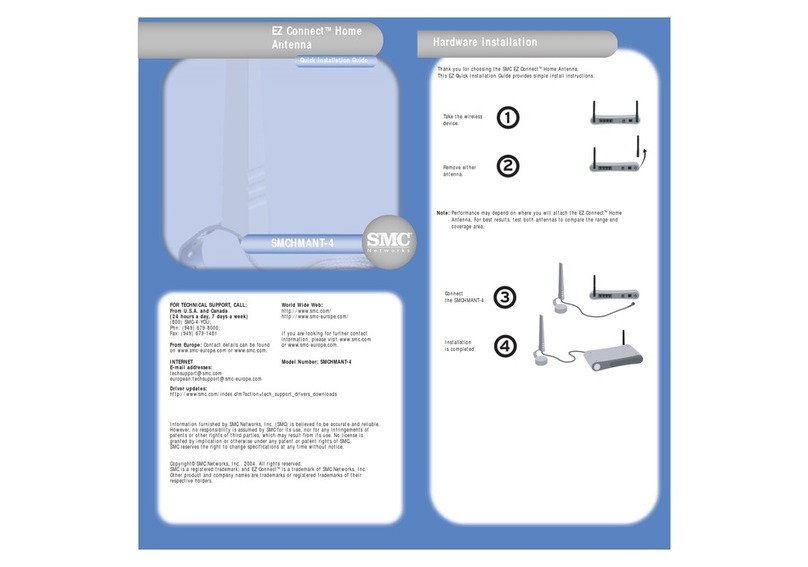
SMC Networks
SMC Networks HMANT-4 User manual
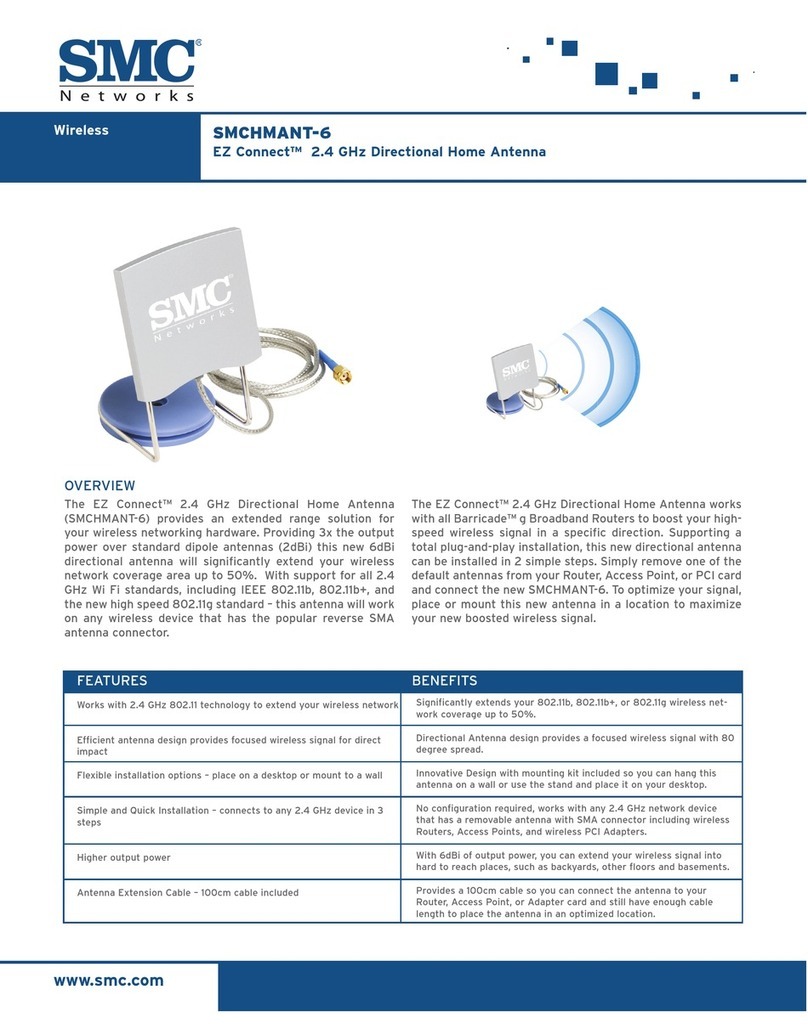
SMC Networks
SMC Networks HMANT-6 - FICHE TECHNIQUE Installation guide
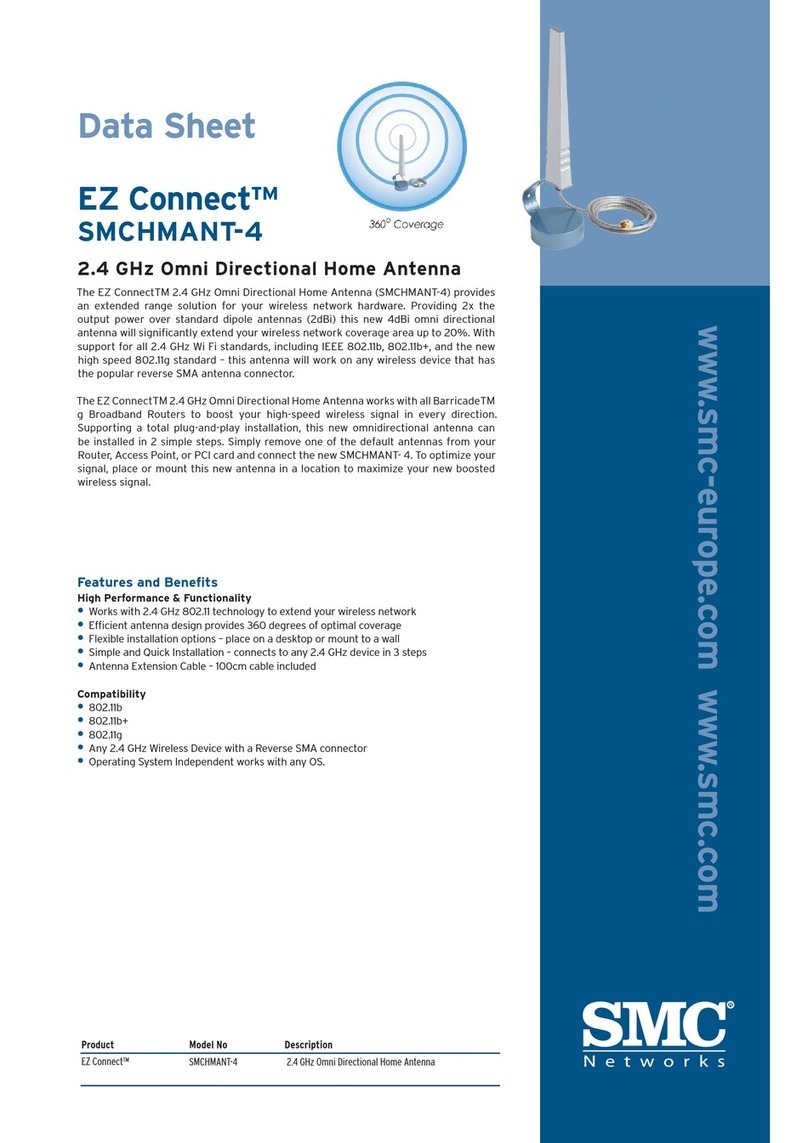
SMC Networks
SMC Networks HMANT-4 - FICHE TECHNIQUE User manual
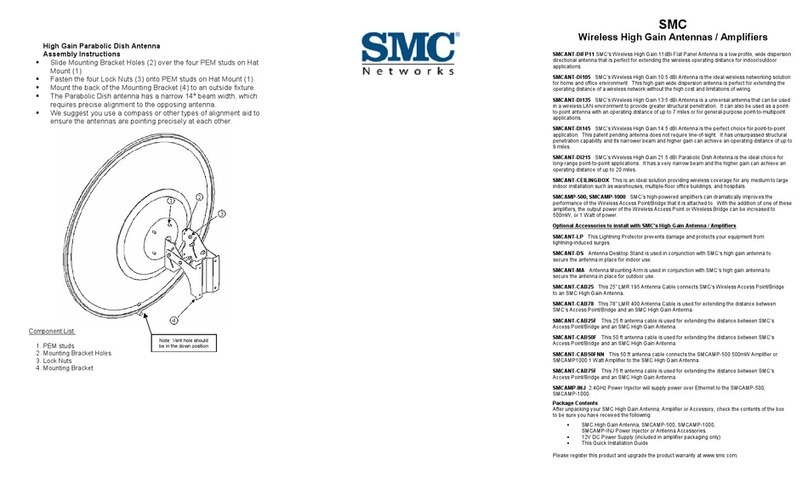
SMC Networks
SMC Networks SMCAMP-1000 User manual
Popular Antenna manuals by other brands

DAVIS
DAVIS Windex AV 3160 installation instructions

Belden
Belden Hirschmann BAT-ANT-N-14G-IP23 Mounting instruction

Vtronix
Vtronix YHK Fitting instructions

KVH Industries
KVH Industries TracVision 6 Technical manual

Leica Geosystems
Leica Geosystems GS10 user manual

Sirio Antenne
Sirio Antenne Gain-Master manual

Feig Electronic
Feig Electronic ID ISC.ANTH200/200 Series manual

TERK Technologies
TERK Technologies TV44 owner's manual

TERK Technologies
TERK Technologies SIR3 owner's manual

Directive Systems & Engineering
Directive Systems & Engineering DSE2324LYRMK quick start guide

HP
HP J8999A instructions

MobilSat
MobilSat MSP-S Mounting instructions















